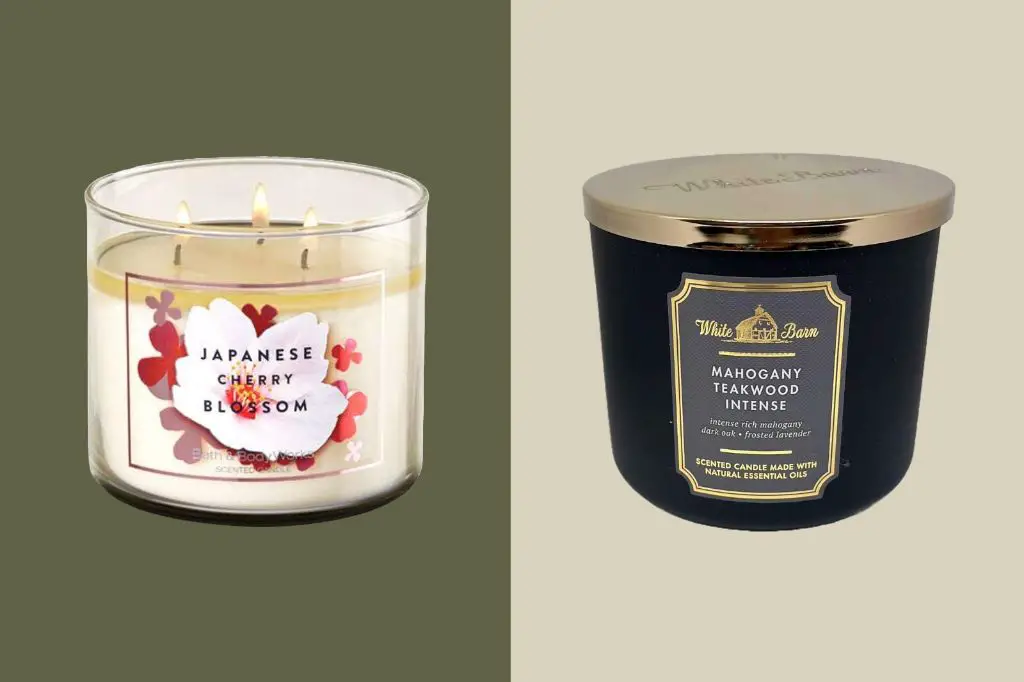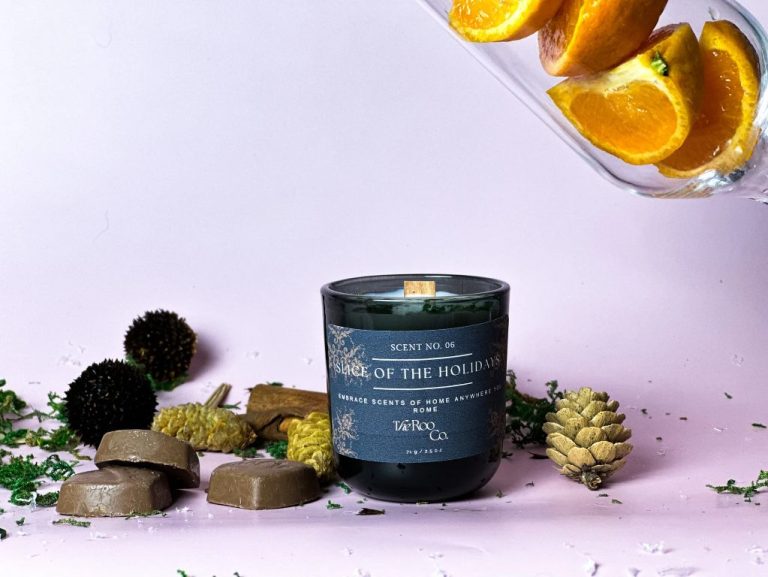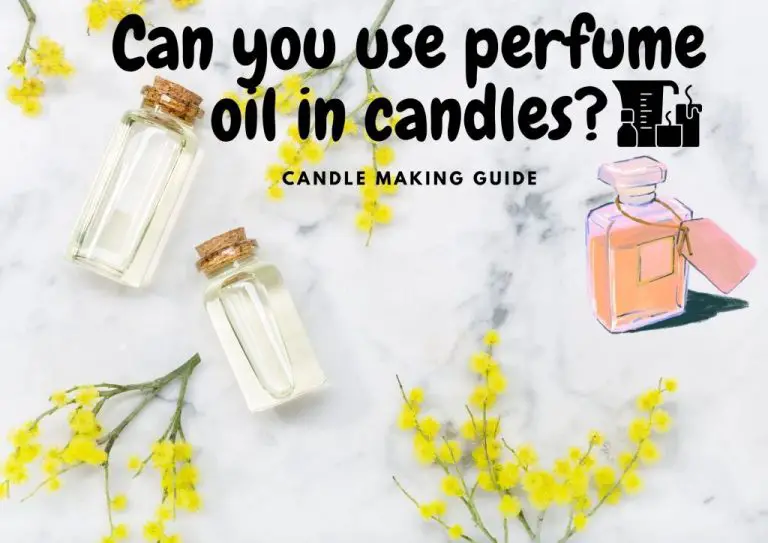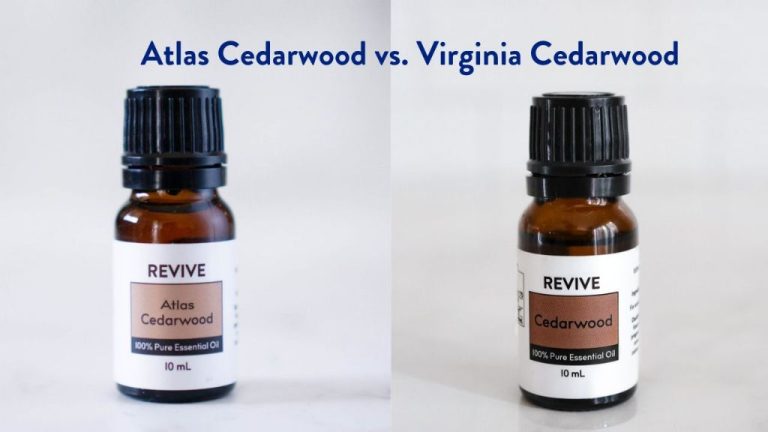Can I Use Any Fragrance Oil To Make Candles?
Fragrance oils are essential ingredients in candle making. They are blended aromatic compounds that provide the distinct scents in candles. Without fragrance oils, candles would be odorless and lack a defining fragrance profile. The role of fragrance oils is to add delightful aromas that create an enjoyable scent experience when burning a candle.
Fragrance oils allow candle makers to create customized scents ranging from fruity and floral, to woodsy and spicy. There are thousands of fragrance oil options to experiment with when designing candle scents. The right fragrance oils can transport your mind, alter moods, or elicit fond memories. Finding fragrance oils that properly scent candle wax is an integral part of crafting quality candles.
Fragrance Oil Types
There are two main types of fragrance oils used in candle making: essential oils and synthetic fragrance oils. Essential oils are derived from plants through methods like steam distillation or cold pressing. According to Candlelore, “Essential oils are natural, but they are also more expensive and can lose their aroma over high heat” (https://candlelore.com/blogs/news/fragrance-oils-in-candles).
Synthetic fragrance oils are artificially created in a lab to mimic natural scents. As Candlelore explains, synthetic fragrance oils are “less expensive, generally stronger scented, and have notes that maintain their aroma well when burned” (https://candlelore.com/blogs/news/fragrance-oils-in-candles). Both essential oils and synthetic fragrance oils have their advantages, and many candle makers use a blend.
Fragrance Oil Properties
When selecting a fragrance oil for candle making, there are three key properties to consider:
Flash Point
The flash point is the lowest temperature at which the fragrance oil’s vapors can ignite with an ignition source present. For candle making, the flash point should be at least 160°F to ensure safe usage. Oils with lower flash points can ignite unexpectedly and are flammable (source).
Scent Throw
The scent throw refers to how well the fragrance disperses into the air when burned. Oils with a high scent throw will provide a stronger aroma. Testing different oil options to find the right intensity for your needs is recommended.
Viscosity
Viscosity is the thickness of the oil. Thinner, less viscous oils can seep into the wax more easily to allow for an even fragrance distribution. However, thicker oils are less likely to sink to the bottom of the candle over time (source).
Choosing Fragrance Oils
When choosing fragrances for candlemaking, it’s important to consider the intensity and scent profile of the fragrance oil. Some key factors to consider include:
Intensity – Fragrance oils come in varying intensities from light to extra strong. For candles, medium to strong intensities tend to work best so the fragrance throws well when the candle is burned. Light fragrances may get drowned out.
Scent Profiles – Think about the type of scent you want to achieve and choose a fragrance oil with an appropriate profile. Floral, fruity, bakery, spicy, woody, and citrus profiles are common. Pick scents that pair well together.
Blending – You can blend two or more fragrance oils together to create more complex scents. But beware that some scents don’t mix well, so test before blending in volume. Start with a ratio of 2:1 or 3:1 when blending.
When selecting and blending fragrances, test the scents to make sure they perform well in candles. Refer to guides like this scent guide for tips on choosing the best fragrance oils for candles based on intensity, throw, and wax compatibility.
Fragrance Oil Safety

When working with fragrance oils, there are some safety concerns to keep in mind. Certain individuals may experience allergic reactions or sensitivities to some fragrance ingredients, especially when used undiluted. It’s a good idea to always review ingredient lists and safety data sheets before using a new fragrance oil.
In general, fragrance oils are considered safe when used as intended in candle making. According to CandleScience, “When used as directed, fragrance oils are perfectly safe to work with and enjoy.” They recommend using fragrances at no more than 10% of your candle wax volume for safety and performance.
Testing fragrances before selling or gifting candles is also advised to check for any potential issues. Always follow usage instructions and dilute fragrance oils properly in wax. Proper ventilation when working with fragrance oils is also recommended.
Some resources indicate essential oils may be safer alternatives for those with sensitivities. However, this depends on the specific essential oils used, as some can also cause reactions. As with any candle ingredient, it’s best to research and test each fragrance oil individually.
Wax Compatibility
When choosing a fragrance oil, it’s important to consider which type of wax you’ll be using. The wax can impact how well the fragrance binds and throws. The main waxes used in candle making include:
- Paraffin – This petroleum-based wax is highly compatible with most fragrance oils. It can hold large amounts of fragrance oil, between 1-1.5 ounces per pound of wax.
- Soy – Made from soybeans, this natural wax binds well with most fragrances. It typically holds around 6-8% fragrance oil by weight.
- Beeswax – Beeswax is also natural but doesn’t hold fragrance oils as well as paraffin or soy. No more than 3-5% fragrance oil is recommended.
- Palm – Palm wax, made from the fruit of palm trees, falls in between paraffin and soy for fragrance binding. Up to 10% fragrance can be used.
The wax type impacts the maximum fragrance load. Exceeding the recommend amount risks the fragrance not binding properly. This can lead to fragrance “throw” issues. Consult the manufacturer’s guidelines when formulating candles with different waxes.
Recommended Usage Rates
When formulating candles, an important consideration is the amount of fragrance oil to use. There are some general guidelines for typical usage percentages:
- For soy wax candles, a usage rate of 6-8% is common. This equals about 1-1.5 ounces of fragrance oil per pound of wax.
- For paraffin wax candles, a usage rate of 10-12% is typical. This equals about 1.5-2 ounces of fragrance oil per pound of wax.
- Higher wax temperatures and wetter wax blends can hold more fragrance, allowing usage up to 12-15%.
- Double scented candles use about twice as much fragrance oil, so 12-16% of the wax weight.
Exceeding the recommend amount risks reducing scent throw or causing issues like weeping or frosting on the candles. Testing different usage rates with your wax is advisable to find the optimal percentages.[1]
Storage and Handling
Proper storage and handling of fragrance oils is important to maximize their shelf life and prevent degradation of the fragrance compound. The ideal storage conditions for fragrance oils are in a cool, dry place away from light and heat sources according to FromNatureWithLove.com (https://www.fromnaturewithlove.com/library/storagefragranceoils.asp). Fragrance oils should be stored in tightly sealed containers made of glass, aluminum or tin. Amber or cobalt blue colored glass bottles are recommended as they help block UV light that can damage the fragrance oils.
When measuring and mixing fragrance oils, use clean, dry utensils dedicated for fragrance oils only. Accurately measure the amount of fragrance oil needed for your recipe to avoid over- or under-scenting. Mix the fragrance oil thoroughly into the wax while the wax is in its liquid state before pouring candles. Always handle fragrance oils carefully and avoid contact with skin as some oils may cause irritation or allergic reactions.
Top Fragrance Oils
Some of the most popular fragrance oils for candles include:
- Vanilla – A warm, sweet, and comforting classic. Vanilla works well on its own or blended with scents like lavender, cinnamon, and coconut.
- Cinnamon – A spicy, festive fragrance perfect for the holidays. Pairs nicely with apple, vanilla, and bakery notes.
- Pumpkin Spice – A blend of cinnamon, nutmeg, cloves, and other baking spices. Reminiscent of autumn and often blended with vanilla.
- Peppermint – A refreshing, invigorating mint fragrance. Uplifting on its own or combined with citrus.
- Lavender – A floral, herbaceous scent known for its relaxing qualities. Compliments vanilla, sage, and eucalyptus.
- Citrus – Fruity scents like lemon, orange, grapefruit, and lime. Add an energizing brightness to other aromas.
- Pine – An outdoorsy evergreen smell. Pairs well with fir, spruce, cedarwood, and eucalyptus for forest-inspired candles.
- Apple Cinnamon – A mouthwatering blend of red apple and spices. Reminiscent of baked goods and autumn.
- Ocean/Seaside – A clean, refreshing medley of aquatic notes. Can contain sea salt, driftwood, water lily, etc.
- Sugar Cookie/Vanilla Cookie – Sweet, indulgent baked goods scents featuring vanilla, butter, and sugar.
Popular fragrance combinations include lavender vanilla, pine balsam fir, and orange cinnamon clove. Testing different scent blends can result in unique, complex candle fragrances.
Conclusion
When choosing a fragrance oil for candle making, it’s important to consider the oil’s properties and safety information. Select an oil that is designed for candle making, as these are tested to be non-flammable and stable at candle-burning temperatures. Look for an oil that blends well with your wax type and usage rate. Avoid phthalates, oil-based, and flashpoint fragrance oils. Stick to usage rates of 5-10% to avoid issues like poor scent throw or smoking. Store oils properly and handle with care.
Choosing the right fragrance oil is key to creating safe, high-quality, great-smelling candles. Test out scent options to find your desired fragrance profile. Study up on usage tips for that oil and wax type. With some care and research, you can use fragrance oils to make candles you’ll be proud to burn.



